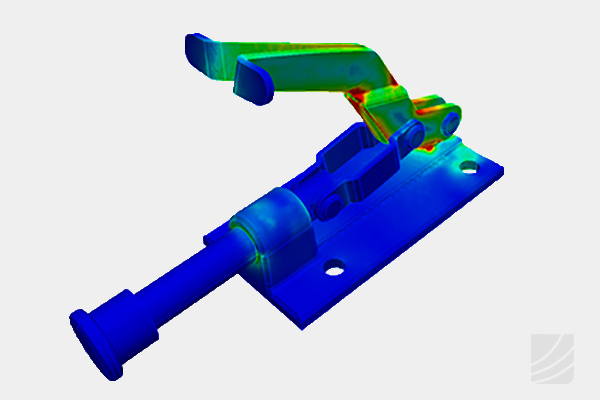Guide to Virtual Testing for Physical Products: Simulation Software and Techniques
- Mohamed Abdelmomen

- Jun 28, 2023
- 3 min read
Introduction
In the field of mechanical design, virtual testing through simulations has revolutionized the product development process. By leveraging advanced software tools, engineers can evaluate and optimize their physical products before manufacturing, saving time, resources, and minimizing potential risks. In this comprehensive guide, we will explore various types of virtual tests that can be conducted, along with recommended software solutions to help you get started.
1. Finite Element Analysis (FEA)

Finite Element Analysis is a widely used technique for analyzing the structural behavior of components and assemblies under different loading conditions. It helps identify potential areas of failure, optimize designs, and validate the performance of physical products. Key software tools for FEA include:
a) ANSYS Mechanical
A powerful and versatile software suite for structural analysis, providing a wide range of capabilities for linear and nonlinear analyses, as well as dynamic simulations.
b) Abaqus
A comprehensive FEA software suite that offers advanced features for modeling, simulation, and optimization of mechanical systems. It supports various types of analyses, including static, dynamic, thermal, and coupled-field simulations.
2. Computational Fluid Dynamics (CFD)

CFD simulations are used to study fluid flow, heat transfer, and other related phenomena in and around physical products. This helps optimize designs for better performance, energy efficiency, and safety. Prominent CFD software options are:
a) ANSYS Fluent
A leading CFD software package that offers a wide range of tools for simulating fluid flow, heat transfer, and multiphysics phenomena. It is renowned for its accuracy, scalability, and versatility.
b) OpenFOAM
An open-source CFD software with a large user community. OpenFOAM provides a flexible platform for simulating complex fluid flow problems, allowing customization and integration with other tools.
c) COMSOL Multiphysics
A versatile CFD software offering comprehensive capabilities for simulating fluid flow, heat transfer, and multiphysics phenomena.
3. Multibody Dynamics (MBD)

MBD simulations focus on the behavior and motion of interconnected mechanical components, such as linkages, gears, and assemblies. These simulations help analyze dynamic responses, forces, and system behavior. Noteworthy MBD software includes:
a) MSC Adams
A comprehensive multibody dynamics solution that enables engineers to simulate and analyze the motion and interaction of mechanical systems. It offers robust capabilities for kinematics, dynamics, and optimization.
b) Simpack
A versatile software package for analyzing the dynamics of mechanical and mechatronic systems. Simpack excels in simulating complex assemblies with flexible bodies, contacts, and dynamic interactions.
4. Thermal Analysis

Thermal simulations are essential for understanding the heat distribution and thermal behavior of physical products. They aid in optimizing cooling strategies, preventing overheating, and ensuring thermal management. Key thermal analysis software options are:
a) COMSOL Multiphysics
A multiphysics simulation platform that enables engineers to perform coupled thermal analyses, including conduction, convection, radiation, and phase change phenomena. It offers a user-friendly interface and extensive material libraries.
b) SolidWorks Simulation
A widely-used CAD-integrated software suite that includes thermal analysis capabilities. It provides tools for steady-state and transient thermal simulations, allowing engineers to evaluate temperature distributions and thermal stresses.
5. Electromagnetic Compatibility (EMC) Analysis:
EMC simulations help assess and mitigate electromagnetic interference and compatibility issues in electronic products. They ensure compliance with regulatory standards and enhance product reliability. Notable EMC simulation software options are:
a) CST Studio Suite
A comprehensive software suite for electromagnetic simulations, offering a range of solvers to analyze electromagnetic fields, interference, and radiation. It provides advanced tools for antenna design, electromagnetic compatibility, and signal integrity.
b) Altair HyperWorks
A simulation platform that includes electromagnetic simulation capabilities for analyzing electromagnetic fields and interactions. It enables engineers to evaluate shielding effectiveness, signal integrity, and electromagnetic compatibility.
Conclusion
Virtual testing through simulation software has become an indispensable part of the mechanical design process. By leveraging the power of these tools, engineers can predict and optimize the behavior of physical products, leading to improved performance, reduced costs, and faster time to market. It is essential to choose the right software based on the specific simulation requirements of your product. The recommended software solutions mentioned in this guide can serve as a starting point for your virtual testing journey, but it is always advisable to evaluate and select the software that best aligns with your needs and expertise.



Comments